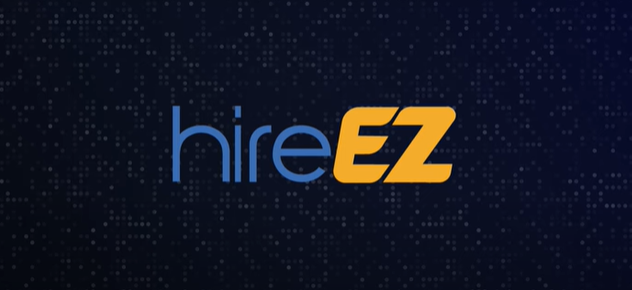9 Steps to Creating an Effective Recruitment Marketing Strategy
March 14, 2024 6 min read
New research from ERE Media finds contentment among job candidates — a measure of how they feel about the hiring process and the candidate experience overall — continues to decline and candidate resentment remains higher than a few years ago. Other recent recruitment data shows almost 96% of people who applied to jobs online didn't finish their online application, a trend that runs across industries.
It's all leaving many employers with reduced candidate pools, missed opportunities to secure top talent, and employee engagement, productivity, and business performance at risk.
Today more than ever, attracting top talent requires more than just a standard job posting. Recruitment marketing has emerged as a strategic approach to finding, engaging, and nurturing candidates before they ever apply. HR professionals, recruiters, and hiring managers who want to master this evolving discipline to significantly elevate the quality of their hires and improve overall recruitment efficiency can benefit from following nine critical steps in developing a successful recruitment marketing strategy supported by research, data and today's technology.
1. Leverage Your Employer Brand
In today's competitive job market, it's essential to have a strong employer brand that resonates with potential candidates. After all, it's the first perception of your organization for a job seeker and includes elements such as company culture, values, and employee satisfaction.
A critical consideration is that your brand be accurate — from describing your company culture to your employee benefits. One Gartner study found that nearly 90% of job candidates said they have exited a hiring process due to at least one mismatch with their own preferences around the company's employee value proposition (EVP), which includes compensation and benefits as well as things like flexibility in working hours, career pathing, skills development, team diversity, and management style.
Your recruitment marketing strategy should ensure you showcase your employer brand through social media, career pages on your website, and employee testimonials.
2. Define and Understand Your Target Audience
Before you start promoting your job openings, it's important to identify who your target candidates are. This will help you understand their needs and preferences, what motivates them and where they spend their time online. This way, you can tailor your recruitment marketing efforts for greater effectiveness.
Conducting candidate persona research is a useful technique for creating a detailed profile of your ideal candidate. Consider factors such as demographics, career objectives, preferred communication channels, and the factors that most influence their job choice. By tailoring your recruitment efforts to meet the specific needs and behaviors of your target audience, you can ensure your messaging resonates and attracts the right talent to your organization.
3. Optimize Your Career Site
Your career site is often the first point of contact between your company and potential applicants — a true reflection of your employer brand. Making it informative, engaging, and user-friendly can significantly impact application rates.
A poor career site experience not only deters qualified and desirable candidates from applying with your organization, it has an incredibly detrimental ripple effect, because people who have a negative candidate experience tell others about it. Nearly three in four (72%) of job seekers say they have shared a poor experience on sites like Glassdoor, on social media, or directly with a colleague or friend. Over 1 in four (27%) would “actively discourage” others from applying for a job with that company, according to a LinkedIn survey.
Ensure your career site is optimized for mobile, showcases your culture, and provides a seamless application process.
4. Build an Employee Referral Program
A study by LinkedIn found that employee referrals are the No. 1 source of quality hires. In short: Your employees are your best resource for snagging top talent. Encourage your employees to refer their friends and acquaintances for job opportunities in your organization. To make the process more effective, consider implementing a referral program with incentives for successful referrals.
5. Utilize Data and Analytics
Data-driven decision-making stands at the heart of modern recruitment marketing. LinkedIn research demonstrates that companies using data analytics for recruitment are twice as likely to improve their recruiting efforts and three times more likely to reduce costs.
Start by analyzing your current recruitment metrics to identify bottlenecks and areas for improvement. Utilize applicant tracking systems (ATS) and recruitment marketing software to track sources of top candidates, engagement rates, and conversion rates from initial contact to hire. This data will allow you to refine your approach and allocate resources more effectively.
Additionally, use social media monitoring tools to gain insights into your target audience's online behavior and preferences.
6. Personalize Recruitment Marketing
In a digital age where personalization dominates consumer experiences, candidates now expect the same from their job search. The best way to think about personalization in recruitment is to think about it in terms of customization. It involves tailoring the whole recruitment process to meet each applicant's unique needs and preferences.
Strategies for personalizing your recruiting efforts include:
- Tailored communication — customized emails, messages, and communication strategies based on the candidate's profile and preferences
- Individualized application processes — creating unique application processes based on the specific skills and experiences sought for each position.
- Data-driven personalization — utilizing data analytics and machine learning to personalize recruitment efforts based on historical candidate interactions and preferences.
- Personalization in recruitment marketing — customizing marketing materials, including job advertisements and social media content, to resonate with the target audience
- Tailored job descriptions — crafting job descriptions that appeal to the targeted candidate audience, using language and content that align with their aspirations.
7. Measure Success with KPIs
Key Performance Indicators (KPIs) are vital for assessing the effectiveness of your recruitment marketing strategy. Commonly tracked KPIs include time-to-fill, cost-per-hire, source of hire, candidate engagement rate, and conversion rate. The Aberdeen Group found that companies using data-driven recruitment strategies are twice as likely to improve their recruiting efforts.
Leveraging the right metrics in a timely way can enhance the effectiveness of your recruitment strategy over time. Establish clear KPIs early on, then regularly review them to be clear about what's working and where you have room for improvement.
8. Employ Storytelling
Integrating storytelling into your recruitment marketing can differentiate your employer brand in a crowded marketplace. Authentic stories about your company culture, values, and employee experiences resonate with potential candidates and help them envision being part of your team.
Data from LinkedIn's “Global Talent Trends” indicates that candidates are 2.4 times more likely to consider your job opportunities if they feel connected to your organization. Harness various media — videos, blogs, and testimonials to convey your company's narrative and values compellingly.
9. Leverage Recruitment Marketing Automation
A recent survey by Aptitude Research found that companies using recruitment marketing platforms reported a 3x improvement in candidate engagement and a 2x increase in conversion rates. Select tools that integrate well with your ATS and CRM systems to ensure a seamless flow of candidate data across your recruitment ecosystem.
It's an important consideration. Recent recruitment data research found that almost 96% of people who applied to jobs online didn't finish their online application. A Glassdoor study, meanwhile, shows that most companies have a worrying 80% candidate drop-off rate during their application process.
Recruitment marketing automation has the potential to revolutionize the recruitment process, making it more efficient and effective for everyone involved. It can streamline many aspects of recruitment marketing, from sourcing candidates to nurturing them through the application process. Tools like chatbots for initial interactions, automated email nurturing campaigns, and AI-driven job advertising can not only improve the candidate experience but also free up significant time for HR teams to focus on more strategic tasks.
Summing Up
Creating an effective recruitment marketing strategy requires a blend of understanding your employer brand, knowing your audience, leveraging the right tools and platforms, and continuously optimizing based on data insights. By following these steps, HR professionals, hiring managers, and recruiters can significantly enhance their ability to attract, engage, and hire top talent in today's competitive job market.
newsletter
Subscribe for our daily news
By filling out this form you agree to hireEZ's Privacy Policy and consent to receive communications from hireEZ.
Outbound Recruiting
newsletter
Subscribe for our daily news
By filling out this form you agree to hireEZ's Privacy Policy and consent to receive communications from hireEZ.
Stay Up-to-Date on Future Talent Acquisition Events
By filling out this form you agree to hireEZ's Privacy Policy and consent to receive communications from hireEZ.
related BLOGS
videos

hireEZ - Outbound Recruiting Made Easy!

A Hiring Superhero Rebrand Made EZ